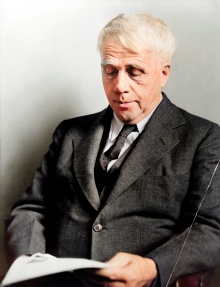Overview
Robert Frost’s A Witness Tree (1942) is a late-career collection that fuses New England landscapes with meditations on love, loss, mortality, and national identity. Composed amid personal bereavement and global war, the book refines Frost’s characteristic plain speech and dramatic poise into a quieter, more inward register. The title invokes the surveyor’s “witness tree” that marks boundaries and testifies to ownership, a figure Frost turns into a governing metaphor: the poems stand as living markers of remembered ties, moral lines, and the stubborn continuities of the natural world.
Context and Mood
Published during World War II after the deaths of Frost’s wife and other family tragedies, the collection carries a tempered, autumnal tone. While never confessional in a modern sense, its speakers are solitary and searching, frequently listening for answers in woods, fields, and the motions of animals. The note is elegiac without surrendering to despair; the poems witness hurt, but they also register the resilience of attention, craft, and the daily textures of rural life.
Themes
A Witness Tree balances intimate love poems with philosophical parables and American public speech. Love is rendered as both tether and release, an ordering cord that permits the mind to range freely. Nature is not a mirror of human feeling so much as a counter-presence that resists appropriation; it returns the gaze with silence, or with sudden, startling life. The collection also pauses over the fact of mind, its minuteness against vastness, its capacity to confer meaning, and its ethical obligations in an age of mechanized violence. Underneath runs Frost’s enduring preoccupation with boundaries: between self and other, wilderness and homestead, private grief and collective destiny.
Notable Poems
The sonnet “The Silken Tent” figures a woman as a tent lightly supported by a single, unseen cord, a vision of love as poise within constraint. “Come In” hears a thrush summon the speaker into the dark of the wood; he declines, choosing the last light at the forest’s edge, a subtle parable of resisting the pull of oblivion. In “The Most of It,” a solitary caller longs for an answering voice and receives instead a buck that surges from a lake’s far shore, nature’s reply as presence rather than consolation. “A Considerable Speck (Microscopic)” contemplates a mote darting on the manuscript page, an ode to consciousness itself and a defense of mind against mindlessness. “Never Again Would Birds’ Song Be the Same” imagines Eve’s voice altering birdsong forever, a mythic flourish that binds human love to the world’s music. “The Gift Outright,” written earlier but published here, speaks in public cadence about America’s possession of the land and the land’s possession of its people, a national self-portrait later immortalized at Kennedy’s inauguration.
Form and Voice
Frost’s craft is steady and exacting: sonnets with supple turns, blank verse that sounds like speech, and rhymed stanzas whose closures feel both inevitable and questioning. The diction is homely, the syntax artfully knotted, the arguments unfolding via anecdote, parable, and a last-line swerve. He lets weather, birds, trees, and animals carry metaphysical weight, but resists allegory’s neatness; the world remains stubbornly itself.
Significance
A Witness Tree earned Frost his fourth Pulitzer Prize and affirmed the authority of his late style, intimate yet public, stoic yet tender. It gathers a suite of enduring lyrics that testify, like the title’s marker, to what survives: memory, measure, and the stubborn act of noticing in a world that does not always answer back.
A Witness Tree
A Witness Tree is a Pulitzer Prize-winning collection of poems by Robert Frost.
Author: Robert Frost
 Robert Frost, an acclaimed poet known for his evocative poetry reflecting rural life and universal themes.
Robert Frost, an acclaimed poet known for his evocative poetry reflecting rural life and universal themes.
More about Robert Frost
 Robert Frost, an acclaimed poet known for his evocative poetry reflecting rural life and universal themes.
Robert Frost, an acclaimed poet known for his evocative poetry reflecting rural life and universal themes.